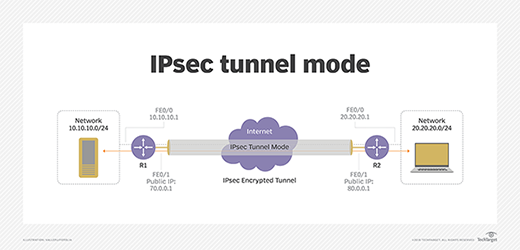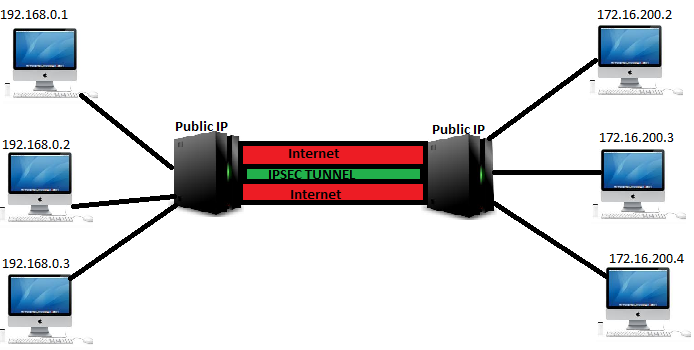Featured
Table of Contents
About Ipsec Vpn Negotiations
IPsec authenticates and encrypts data packages sent out over both IPv4- and IPv6-based networks. IPsec procedure headers are found in the IP header of a packet and specify how the data in a package is managed, including its routing and shipment across a network. IPsec adds numerous components to the IP header, including security info and several cryptographic algorithms.

ISAKMP is specified as part of the IKE protocol and RFC 7296. It is a structure for essential facility, authentication and settlement of an SA for a secure exchange of packets at the IP layer. To put it simply, ISAKMP defines the security parameters for how 2 systems, or hosts, interact with each other.
They are as follows: The IPsec procedure starts when a host system recognizes that a packet needs security and ought to be transferred utilizing IPsec policies. Such packages are thought about "fascinating traffic" for IPsec purposes, and they trigger the security policies. For outbound packages, this implies the appropriate file encryption and authentication are applied.
Internet Protocol Security (Ipsec)
In the second step, the hosts utilize IPsec to work out the set of policies they will use for a secured circuit. They likewise confirm themselves to each other and established a secure channel in between them that is used to negotiate the method the IPsec circuit will encrypt or authenticate data sent across it.

A VPN basically is a personal network carried out over a public network. VPNs are frequently used in companies to enable workers to access their corporate network from another location.
Typically utilized in between guaranteed network entrances, IPsec tunnel mode enables hosts behind one of the entrances to interact securely with hosts behind the other gateway. For instance, any users of systems in a business branch workplace can safely link with any systems in the main office if the branch workplace and primary office have safe and secure gateways to function as IPsec proxies for hosts within the particular workplaces.
Ipsec Vpns: What They Are And How To Set Them Up
IPsec transport mode is utilized in cases where one host requires to engage with another host. The 2 hosts negotiate the IPsec circuit straight with each other, and the circuit is normally taken apart after the session is total. A Safe Socket Layer (SSL) VPN is another method to securing a public network connection.
With an IPsec VPN, IP packets are secured as they travel to and from the IPsec gateway at the edge of a private network and remote hosts and networks. An SSL VPN protects traffic as it moves between remote users and an SSL entrance. IPsec VPNs support all IP-based applications, while SSL VPNs just support browser-based applications, though they can support other applications with custom-made advancement.
See what is best for your company and where one type works best over the other.
Understanding Vpn Ipsec Tunnel Mode And ...
Each IPsec endpoint confirms the identity of the other endpoint it desires to communicate with, making sure that network traffic and information are only sent out to the intended and permitted endpoint. In spite of its excellent energy, IPsec has a couple of issues worth mentioning. First, direct end-to-end communication (i. e., transmission approach) is not constantly readily available.
The adoption of different local security policies in massive distributed systems or inter-domain settings might posture severe problems for end-to-end interaction. In this example, presume that FW1 needs to inspect traffic material to spot invasions and that a policy is set at FW1 to deny all encrypted traffic so as to implement its content inspection requirements.
Users who use VPNs to remotely access a private service network are put on the network itself, providing the very same rights and functional abilities as a user who is linking from within that network. An IPsec-based VPN may be created in a range of ways, depending upon the requirements of the user.
What Is Ipsec?
Since these parts may originate from different suppliers, interoperability is a must. IPsec VPNs allow smooth access to business network resources, and users do not always require to utilize web access (gain access to can be non-web); it is for that reason an option for applications that need to automate communication in both ways.
Its framework can support today's cryptographic algorithms in addition to more effective algorithms as they appear in the future. IPsec is a mandatory component of Internet Procedure Variation 6 (IPv6), which companies are actively releasing within their networks, and is strongly advised for Internet Protocol Variation 4 (IPv4) applications.
It provides a transparent end-to-end protected channel for upper-layer procedures, and applications do not need adjustments to those procedures or to applications. While possessing some downsides associated with its intricacy, it is a fully grown procedure suite that supports a series of file encryption and hashing algorithms and is extremely scalable and interoperable.
How Does Vpn (Ipsec) Work?
Like VPNs, there are many ways a Zero Trust design can be implemented, however options like Twingate make the process substantially easier than needing to wrangle an IPsec VPN. Contact Twingate today to learn more.

IPsec isn't the most common internet security protocol you'll utilize today, however it still has a vital role to play in securing internet communications. If you're utilizing IPsec today, it's most likely in the context of a virtual personal network, or VPN. As its name implies, a VPN develops a network connection in between two machines over the general public internet that's as safe and secure (or almost as secure) as a connection within a personal internal network: most likely a VPN's a lot of popular use case is to permit remote staff members to gain access to protected files behind a business firewall software as if they were operating in the office.
For many of this post, when we say VPN, we mean an IPsec VPN, and over the next several sections, we'll discuss how they work. A note on: If you're aiming to set up your firewall software to permit an IPsec VPN connection, be sure to open UDP port 500 and IP ports 50 and 51.
Ipsec - Wikipedia

When this has all been set, the transportation layer hands off the information to the network layer, which is mainly controlled by code working on the routers and other parts that comprise a network. These routers decide on the path individual network packages require to their destination, however the transport layer code at either end of the communication chain doesn't need to know those information.
On its own, IP doesn't have any integrated security, which, as we kept in mind, is why IPsec was developed. Today, TLS is built into virtually all internet browsers and other internet-connected applications, and is more than sufficient security for daily web usage.
That's why an IPsec VPN can include another layer of security: it involves protecting the packets themselves. An IPsec VPN connection begins with establishment of a Security Association (SA) in between two interacting computer systems, or hosts. In basic, this includes the exchange of cryptographic secrets that will allow the parties to encrypt and decrypt their communication.
Latest Posts
Best Virtual Private Network (Vpn) Software 2023
The Best Vpn For Business In 2023: Top 8 Corporate ...
Best Vpns For Freelancers And Remote Workers: Protect ...